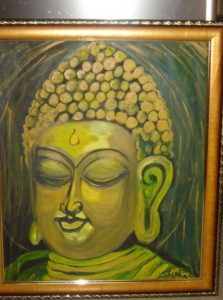Healing, Relaxing and Stimulating Influence of Jazz Music On Stress
Soothing music that heals aching heart and stressed body and mind
It is proven fact that, relaxing music including Jazz have soothing effect on mind with improvement on verbal memory, increase in focus and elevation of mood after stroke. Stress is the root to many health problems. There is tremendous change on stressed body and mind conditions, after listening to music and there is healing and relaxing influence of Jazz music on stress.
Jazz Music Origin
Jazz pulsating and rhythmic patterns compels one to mimic the music and drown in it completely, causing neural stimulation.
Let it snow………..Let it snow……………Let it snow………….(Frank Sinatra- American Singer for Traditional Pop, Classic Pop, Easy listening Jazz and Swing Vocal Jazz)
Jazz music genre originated from African-American music in late 19th and early 20th century in New Orleans, Louisiana. This genre developed in New York in late 1920s. This genre allows musicians to play same music night after night, but with different notes.
Psychology behind Jazz
According to a study of jazz musicians, by two John Hopkins professors, jazz musicians improvise during their music rendition and let self expression flow freely. They allow self-censoring the inhibition and introspection. This is done as they turn-off a dorsolateral prefrontal and lateral orbital region of brain and turn-on medial prefrontal cortex region, to create and render jazz music.
They take over their audience by creative spontaneity, expression and innovation, so that they create an environment, where everyone is filled with, their soulful improvisations of blues, romance and miseries combined with infectious rhythms!
Jazz Language
“Jazz” originally a slang word probably evolved from “Jas”…”Jass”….”Jaz”….or may be “Jasz”.
Here two musicians are so involved and conversing in their musical language and expressions, that listeners, even those who do not having complete understanding of the music, are also absorbed in music so they mimic musician’s expressions, swinging with rhythmic activity.
Performers are also communicating in non- verbal sign languages, by nodding heads at the end of their piece of music and eye, head and hand movements and turning faces and so on.
Some Jazz Artists
- Louis Armstrong (1901–1971)
- Billie Holiday (1915–1959)
- Nat King Cole (1919- 1965)
- Frank Sinatra (1915–1998)
- Ella Fitzgerald (1917–1996)
- Anita O’ Day(1919–2006)………..
Jazz In Today’s World
Jazz has come a long way since it was introduced and now with so many sub genres and contemporary styles finds its many experimental versions in todays music too:
- Latin Jazz
- Free Jazz
- Acid Jazz
- Soul Jazz
- Bossa Nova Jazz
- Gypsy Jazz
- Dixieland
- Swing
- Big Band
- Bebop
Jazz Orchestra
Jazz orchestra also called Big Band consists of 5 Saxophones, 4 Trumpets, 4 Trombones and a rhythm section made up of Piano, Bass, Guitar , Drums, Vibraphones, Clarinet, Violin and of course Vocal music artists.
Jazz Therapy
Listening to jazz increases Theta Brain wave by 4–8 Hertz which is creative brain wave.
Jazz is stress reliver.
Reduces anxiety.
Sooth nerves with calming and restorative effect.Listening to Jazz increases Immunoglobulin levels(IgA) and prepare you to fight viral and bacterial infections!
